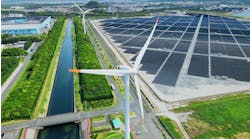Last month the UN Intergovernmental Panel on Climate Change (IPCC) published their Sixth Assessment Report, a nearly-4,000-page document endorsed by 195 governments around the world. Set up in 1988, the IPCC is a partnership between the scientific community and policymakers that aims to deliver regular assessments of the scientific basis of climate change, its impacts and future risks, and options for adaptation and mitigation. IPCC’s Fifth Assessment Report, issued in 2014, provided the scientific input for the landmark Paris Agreement adopted in 2015, in which the participating countries committed to limiting global warming to well below 2° C by 2030.
The latest assessment includes the following key findings.
- Human influence has unequivocally contributed to climate change that is affecting many weather and climate extremes across the globe.
- Global surface temperature will continue to increase and warming of 1.5° C and 2° C will be exceeded during the 21st century unless deep reductions in CO2 and other greenhouse gas emissions occur in the coming decades.
- Changes in the climate system (i.e. hot extremes, heavy precipitation, drought, cyclones, rising sea levels, etc.) will increase in intensity in direct relation to increasing global warming.
- Many of the changes due to past and future greenhouse gas emissions are irreversible for centuries to millennia, especially changes in the ocean, ice sheets, and global sea level.
- From a physical science perspective, limiting human-induced global warming to a specific level requires limiting cumulative CO2 emissions, reaching at least net zero CO2 emissions.
While the report itself is non-normative and does not contain policy recommendations, the UN’s Conference of the Parties (COPs)—the most influential climate policy-setting body—will base many of its decisions on the report’s findings at the upcoming 26th annual UN Climate Change Conference (COP26), taking place in Glasgow, Scotland October 31 through November 12. And some of those decisions will impact the smart building industry.
A focus on the built environment
While it remains to be seen exactly what policies will come out of the COP26, organizers have confirmed that the conference will address emissions from buildings during a full day dedicated to the built environment. Scheduled for November 11, this “Cities, Regions, and Built Environment Day,” organized by a coalition of international organizations including the World Business Council for Sustainable Development (WBCSD), is expected to tackle the topic of net-zero buildings that do not contribute any net CO2 to the atmosphere, either via embodied carbon emitted during construction or while the building is in use.
Considering that the built environment is responsible for about 40% of global greenhouse emissions, it’s highly likely that the COP26 will fuel policies that further propel the use of smart building technologies. But industry experts agree that it’s not just the operational carbon emissions of a building that need to be considered, but also the embodied carbon that represents emissions during construction. While operational carbon currently accounts for 28% of total greenhouse gas emissions and embodied carbon accounts for only about 11%, estimated increases in building construction have industry experts predicting that by 2050, the levels will be nearly equal.Roland Hunziker, director of sustainable buildings and cities at the WBSCD, describes built-environment emissions as “the sleeping giant” that has to date been largely neglected in the race to net-zero.
“Quite honestly, today, nobody really pays a lot of attention to the full impact of emissions from buildings,” said Hunziker. “How can we give more visibility to the sleeping giant—the built environment—which is a massive source of carbon emissions? It’s the energy we use to heat and cool our buildings but it’s also obviously in the materials. If we want to reduce emissions along the full lifecycle of buildings, then we have to engage those who develop projects—from the investors to developers to the architects who design the buildings.”
Follow the money?
In a recent report from the UN Environmental Programme (UNEP) Financial Initiative, published jointly with the Henley Business School at the University of Reading (UK) and the Brookfield Centre of Real Estate and Infrastructure at the Schulich School of Business, York University (Canada), researchers also investigated the extent that the real estate market is pricing in the risk of extreme weather and climate change.
While there is minimal evidence addressing how climate change is affecting commercial real estate values, because studies in recent years have been more focused on the residential market, the report did find evidence that climate change will impact prices. In particular, the report states that evidence is starting to emerge that buyer and investment demand is shifting in response to climate risk and that extreme weather events may lead to long-lasting decline in prices in some regions. Some noteworthy evidence includes the fact that BlackRock, one of the world’s largest multinational investment managers, is now incorporating climate risk into their estimates of risk and return that are key to their investment decisions. Leading investment manager National Real Estate Advisor has also divested in areas like South Florida due to risk from hurricanes and Houston due to floods.
Over the next decade, experts believe the impact of climate change on commercial real estate values will become increasingly evident. In the meantime, investment in smart building technologies will certainly increase as more companies seek to achieve net-zero, which brings added benefits to building occupants.
“Smart building technology supports responsible companies that seek to reduce energy usage and emissions, while increasing the technical performance efficiencies in facility operations and contributing to a reduction in carbon,” said Salla Eckhardt, director of transformation services with Microsoft. “But we can’t forget that smart building technology is also human-centric and expands the discussion beyond environmental sustainability into social and economic sustainability. Built environments powered by technology can balance people needs with sustainability at each stage of the building lifecycle.”
Betsy Conroy is a freelance writer, editor, and content consultant, specializing in business-to-business media and commerce. She has 30 years’ experience writing technical content.



